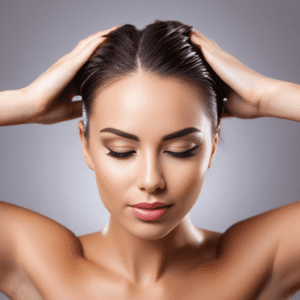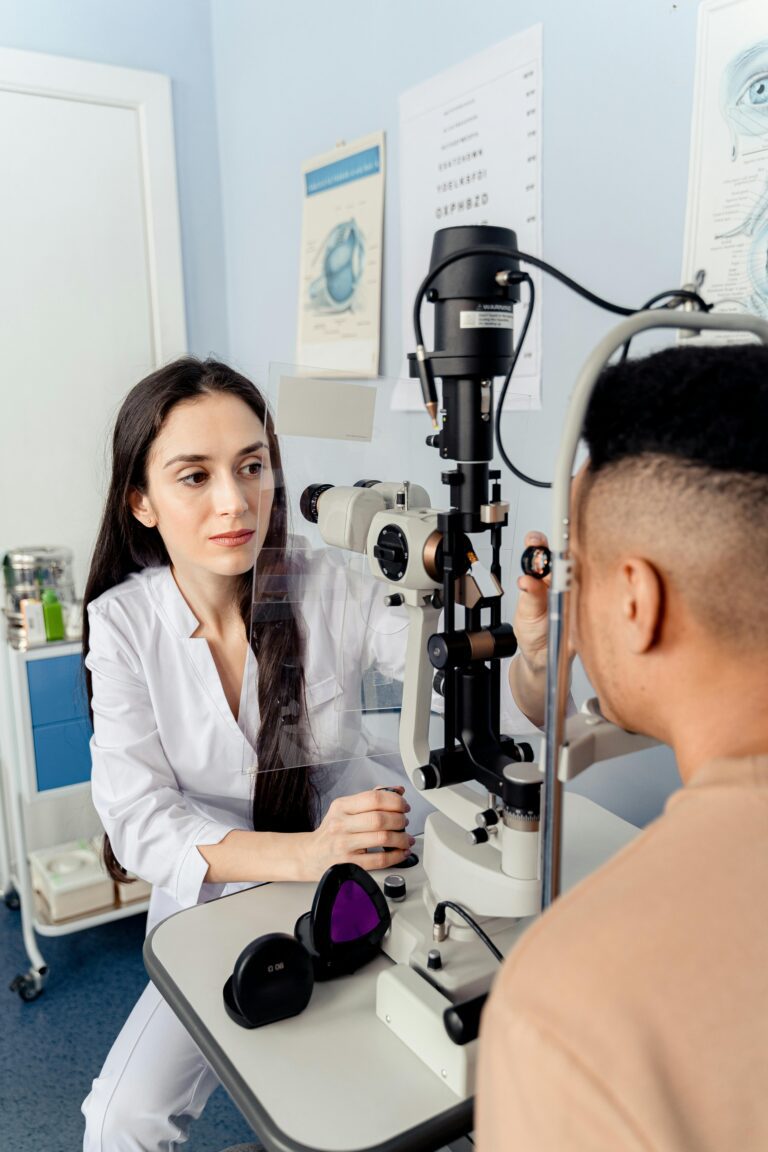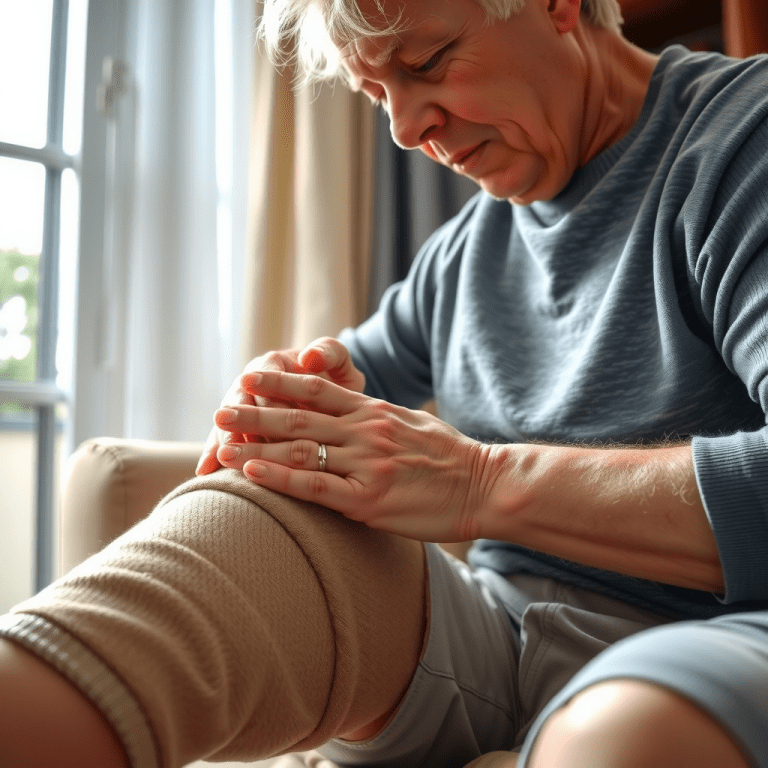Key Takeaways
- Scalp massage can promote hair growth by increasing blood flow to the hair follicles.
- Performing a scalp massage is easy and can be done at home using fingertips or specialized tools.
- Regular scalp massages, ideally a few minutes each day, can contribute to thicker, healthier hair.
- Essential oils like peppermint and rosemary can enhance the benefits of scalp massages.
- Scalp massages offer additional benefits, including stress relief and improved scalp health.
What Is Scalp Massage and How Can It Promote Hair Growth?
 Imagine if nurturing your hair back to health could be as relaxing as a gentle head rub. That’s the promise of scalp massage, a simple yet potent practice that might just be the unsung hero of hair care. So, what’s all the buzz about? Well, it’s about getting right to the root of the matter—literally.
Imagine if nurturing your hair back to health could be as relaxing as a gentle head rub. That’s the promise of scalp massage, a simple yet potent practice that might just be the unsung hero of hair care. So, what’s all the buzz about? Well, it’s about getting right to the root of the matter—literally.
When you massage your scalp, you’re doing more than just pampering yourself. You’re revving up the blood circulation right where your hair comes to life. More blood means more nutrients and oxygen, which means your hair follicles are getting the feast they need to grow strong and long. And it’s not just wishful thinking; there’s science to back it up—but more on that later.
Step-By-Step Guide to Performing a Scalp Massage
Now, let’s get down to business. How do you actually give yourself a scalp massage that could help your hair flourish? Follow these simple steps:
- Find a comfortable place to sit. You can do this while you’re watching TV, reading, or just taking a break.
- Start by warming up a little oil in your hands. Something like coconut or jojoba oil works wonders, but it’s not a must.
- Place your fingertips on your scalp. Forget about your nails; this is a fingertip-only zone.
- Apply gentle pressure and move your fingertips in small circles. Work your way across the whole head, from the hairline to the nape of your neck and back.
- Keep this up for at least five minutes. If you’re enjoying it, why not go for ten?
And there you have it. A simple, soothing ritual that could be your ticket to a fuller head of hair.
Scientific Evidence Linking Scalp Massage to Hair Growth
Now, for the skeptics out there, let’s talk evidence. A study published in the journal ‘Eplasty’ made a fascinating discovery. When they had a group of men perform scalp massages twice daily, they found that over 24 weeks, these men had thicker hair than when they started. That’s right—no fancy chemicals, no expensive treatments, just good old-fashioned scalp massages.
Understanding the Research
But how does it work? Scientists think it’s all about the stretch. When you massage your scalp, you’re stretching the cells of the hair follicles. This stretch sends signals to the follicle that it’s time to get growing. And it’s not just hair thickness that gets a boost. Some studies suggest that scalp massages might also increase hair strength, meaning fewer broken strands and more length retention.
Connecting Blood Flow to Hair Follicle Activity
Besides that, there’s the blood flow factor. More blood to the scalp means more of the good stuff like proteins and growth factors that tell your hair to grow. It’s like watering a plant; give it what it needs, and it’ll reach for the sun.
Most importantly, while the science is promising, it’s still growing. Not every study has found a link between scalp massages and hair growth, but the evidence we do have is enough to say it’s worth a shot—especially when it feels so good.
Employing Scalp Massage Tools
While your fingers are your handiest tools, there are gadgets designed to take your scalp massage game to the next level. Scalp massagers, often with soft silicone tips, can be used to apply just the right amount of pressure without straining your hands. They’re not just for use in the shower either; keep one at your desk or by your bedside for a quick tension-relieving session.
Enhancing Hair Growth: Frequency and Duration of Scalp Massages
Consistency is key when it comes to scalp massages for hair growth. Just like you wouldn’t expect a muscle to grow with sporadic workouts, your hair needs regular stimulation to grow thicker and stronger.
How Often Should You Massage?
To see real results, aim to massage your scalp every day. It doesn’t have to be a big time commitment—just a few minutes daily can make a difference. Think of it as a healthy habit, like brushing your teeth or washing your face.
And remember, this is supposed to be a stress-free experience. If you’re not enjoying it, you’re not doing it right. Relax, breathe, and enjoy the sensation as you nourish your scalp and hair.
Recommended Duration for Effective Results
When it comes to duration, longer isn’t always better. Over-massaging can lead to overstimulation and, in some cases, might even cause more harm than good. Stick to around 5-10 minutes per session.
If you’re using essential oils or a scalp massage tool, you might find that you can comfortably extend your sessions. Just listen to your body—if your scalp starts to feel sensitive or sore, it’s time to stop.
- Begin with a warm-up, gently placing your fingertips on your scalp.
- Apply a moderate amount of pressure in circular motions.
- Cover all areas, from the hairline to the nape of your neck.
- Aim for a total of 5-10 minutes, once or twice daily.
By keeping up with this routine, you’re setting the stage for healthier, more resilient hair growth.
The Ripple Effect of Scalp Massage Beyond Hair Growth
But the benefits of scalp massage don’t stop at hair growth. This simple practice can have profound effects on your overall well-being.
Stress Reduction and Relaxation
Scalp massages are a fantastic way to unwind after a long day. The gentle pressure helps to release tension, not just in your scalp, but throughout your body. It’s a moment of peace in a hectic world, and that relaxation can have a domino effect on your health, including better sleep and reduced anxiety.
Scalp Health and Dandruff Prevention
Beyond relaxation, regular scalp massages can improve the health of your scalp itself. By increasing blood flow, you’re also promoting a healthier environment that’s less prone to dandruff and dryness. A healthy scalp is the foundation of healthy hair, so consider this a critical step in your hair care routine.
Natural Alternatives in Hair Care for Synergistic Effects
While scalp massage is a powerful tool, it’s even more effective when paired with other natural hair care practices.
Nutritious Diet for Hair Health
Your hair is what you eat. To support your scalp massage routine, fuel your body with foods rich in vitamins and minerals that are known to boost hair health. Think lean proteins, omega-3 fatty acids, and plenty of fruits and vegetables. A diet that’s good for your body is good for your hair too.
Some specific nutrients to focus on include:
- Vitamin E, found in nuts and seeds, which can enhance hair growth.
- Iron, plentiful in leafy greens and red meat, critical for healthy blood flow to the scalp.
- Zinc, found in oysters and legumes, which plays a role in hair tissue growth and repair.
Herbal Supplements Worth Considering
Besides a nutritious diet, certain herbal supplements might complement your scalp massage routine. For example, saw palmetto has been studied for its potential to prevent hair loss, and ginseng may promote hair growth by stimulating the follicles. Just be sure to consult with a healthcare professional before starting any new supplement.
Popular Options for Scalp Massage and Hair Growth Solutions
- Over-the-counter topical treatments like minoxidil (Rogaine) can be used alongside scalp massage for added benefit.
- Prescription medications such as finasteride (Propecia) may be recommended for more severe hair loss, but always discuss with a doctor first.
- Natural remedies, including essential oils and herbal supplements, offer a gentler approach and can be a part of your daily scalp massage practice.
And for those who are looking for a comprehensive, natural approach to hair loss, the Samurai Secret to Never Losing Hair offers an intriguing solution. This method, rooted in ancient Japanese practices, is said to repair scalp damage and restore hair growth. To learn more about this fascinating technique, Watch Now and discover if this could be the key to unlocking your hair’s full potential.
The Role of Prescription Medications
Let’s talk about the heavy hitters in the hair growth game: prescription medications. These are the solutions that doctors might prescribe when hair loss has become a significant concern. Two of the most well-known medications are finasteride and minoxidil, and they come with their own set of pros and cons.
Finasteride works by blocking the hormone responsible for hair loss in men, and it’s been shown to be effective. However, it’s not without potential side effects, and it’s typically not prescribed to women. Minoxidil, on the other hand, can be used by both men and women and works by stimulating hair growth, though it may take months to see results.
Example: John started using minoxidil under his doctor’s guidance and noticed new hair growth after about four months. He experienced some initial shedding, which is common, but with consistent use, his hair became noticeably thicker.
While these medications can be powerful, they’re not for everyone. It’s essential to have a thorough discussion with your healthcare provider about the risks, benefits, and whether these treatments are right for you.
Understanding the Benefits of Natural Remedies
Now, if you’re someone who leans towards a more holistic approach, natural remedies for hair growth may pique your interest. These remedies often have fewer side effects and can be a gentler option for your body. Essential oils like rosemary and peppermint have been studied for their ability to stimulate hair growth and improve hair thickness.
Discover the Samurai Secret to Never Losing Hair
For those intrigued by the wisdom of ancient practices, there’s a natural remedy that has stood the test of time. The Samurai Secret is a method steeped in history, believed to repair scalp damage and restore hair growth. If you’re curious to learn more about this age-old technique and how it can benefit your hair, Watch Now.
Frequently Asked Questions (FAQ)
You’ve got questions, and it’s time for some answers. Here are some of the most common queries about scalp massage and hair growth, along with clear, straightforward responses.
Can Scalp Massage Reverse Hair Loss?
While scalp massage has been shown to promote hair growth and improve hair thickness, it’s not a guaranteed cure for all types of hair loss. It’s most effective when used as part of a broader hair care routine and can be especially beneficial for those experiencing hair thinning due to stress or tension.
It’s also worth noting that results can vary from person to person. What works for one might not work for another, so it’s important to manage expectations and consider scalp massage as one piece of the hair growth puzzle.
How Long Before I See Results from Scalp Massage?
Patience is a virtue, especially when it comes to natural remedies. Some people may notice improvements in hair thickness and texture within a few months of regular scalp massage. However, for others, it may take longer to see noticeable changes.
The key is consistency. Making scalp massage a part of your daily routine increases the chances of seeing positive results. And remember, it’s not just about hair growth; it’s also about giving yourself a moment of relaxation each day.
Option A.
Can Scalp Massage Benefit All Hair Types?
Absolutely! Scalp massage is a universal treat that can benefit all hair types. Whether your hair is straight, curly, thick, or thin, increasing circulation to your scalp can help nourish your hair follicles and promote healthier hair growth.
That being said, everyone’s scalp is different, so you may need to experiment with techniques and pressure to find what feels best for you. And if you have any specific scalp conditions, it’s always a good idea to consult with a dermatologist before starting a new routine.
How Do I Know If I’m Massaging My Scalp Correctly?
Here’s the lowdown on doing it right: use the pads of your fingers, not your nails, to gently work in small circles across your scalp. Start from the front and make your way back, then side to side. You’re aiming for a soothing sensation, not a painful one.
If you’re unsure about your technique, there are plenty of resources and tutorials available to guide you. And remember, a scalp massage should feel relaxing—if it doesn’t, ease up on the pressure or try a different method.






